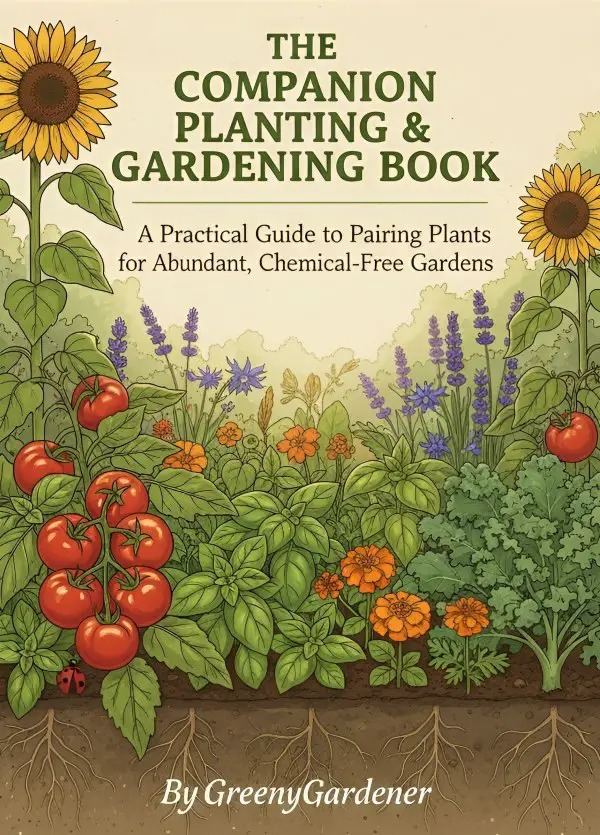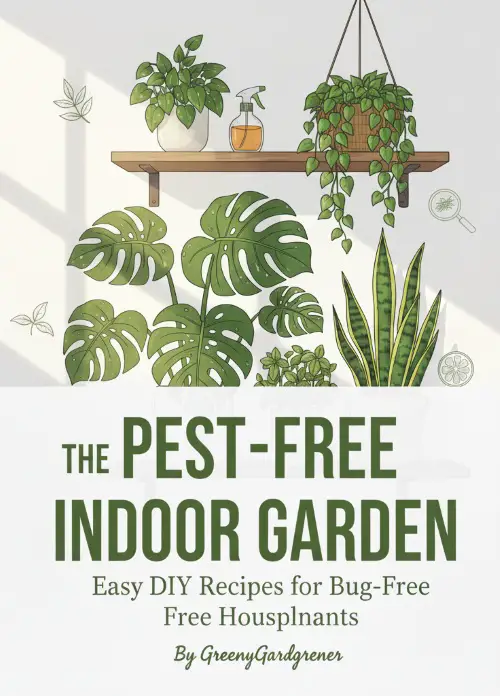White Stuff on Hibiscus: Causes & Quick Fixes
White stuff on hibiscus is likely powdery mildew, a fungal disease common in humid conditions. Hibiscus affected by powdery mildew often display white, powdery patches on leaves and stems, hindering growth and flowering.
Proper care practices, such as adequate sunlight and air circulation, can help prevent and manage this issue effectively. Regularly inspecting plants for early signs of powdery mildew and promptly treating with organic fungicides can also aid in controlling the spread of the disease.
By maintaining a healthy growing environment and implementing proactive measures, you can ensure your hibiscus plants remain vibrant and free from the white stuff.
Recognizing Common Symptoms
White stuff on hibiscus can indicate the presence of pests or diseases. Common symptoms include white, powdery spots on the leaves, stems, and buds. The affected areas may also appear yellow or brown, and the plant’s overall growth may be stunted.
Differentiating Between Pests And Disease
It is essential to differentiate between pests and diseases when dealing with white stuff on hibiscus. Pests such as mealybugs and whiteflies can leave a white, cottony residue on the plant, while fungal diseases like powdery mildew also manifest as white patches. Close observation and proper identification are crucial for effective treatment.

🌿 The Companion Planting & Gardening Book (eBook)
Bigger harvests, fewer pests — natural pairings & simple layouts. $2.40
Get – $2.40
🪴 The Pest-Free Indoor Garden (eBook)
DIY sprays & soil tips for bug-free houseplants. $1.99
Get – $1.99Mealybugs Invasion
Mealybugs are common pests that infest hibiscus plants, leaving behind a white, powdery residue. They are small, soft-bodied insects that suck the sap from plants, causing damage and weakening the hibiscus. To combat mealybug invasion, regularly inspect the undersides of leaves and stems, and consider using natural predators such as ladybugs or introducing neem oil as a natural insecticide.
Whiteflies Infestation
Whiteflies are another common culprit behind the white coating on hibiscus. These tiny, moth-like insects feed on the sap of the plant, causing leaves to yellow and wilt.
Whiteflies also secrete a sticky substance called honeydew, which promotes the growth of sooty mold. To control whiteflies, use insecticidal soap or horticultural oil, and encourage natural predators such as lacewings and parasitic wasps.
Powdery Mildew Fungi
Powdery mildew is a fungal disease that often appears as a white, powdery coating on the leaves and buds of hibiscus plants. This common fungal infection thrives in warm, humid conditions and can weaken the plant if left untreated.
To prevent powdery mildew, ensure proper air circulation around the plants, avoid overhead watering, and consider applying a fungicidal spray containing sulfur or potassium bicarbonate.
What's On the Page
Environmental Factors Contributing To The Problem
White stuff on hibiscus plants can be a cause for concern, as it not only affects the overall aesthetic appeal of the plant, but it may also indicate underlying environmental issues.
Understanding the environmental factors that contribute to this problem is essential in order to effectively address and prevent it. Two key factors that can contribute to the presence of white stuff on hibiscus plants are high humidity and poor air circulation, as well as overcrowding and plant stress.
High Humidity And Poor Air Circulation
High humidity levels and poor air circulation can create a favorable environment for the growth of fungal diseases, such as powdery mildew, which often manifests as white powdery patches on the leaves and stems of hibiscus plants. These conditions promote the development and spread of fungal spores, leading to the appearance of white stuff on the plant’s surface.
When humidity levels are high, the moisture in the air can accumulate on the plant’s leaves and create a damp environment. This moisture, combined with stagnant air due to poor circulation, creates an ideal breeding ground for fungal spores to germinate and grow. As a result, the hibiscus plant becomes susceptible to powdery mildew and other fungal infections.
To mitigate this issue, it is crucial to provide adequate air circulation around the hibiscus plant. This can be achieved by ensuring proper spacing between plants, avoiding overcrowding, and pruning any dense foliage that may hinder air movement. Additionally, regularly monitoring and maintaining optimal humidity levels can help prevent the onset of fungal diseases.
Overcrowding And Plant Stress
Overcrowding can also contribute to the appearance of white stuff on hibiscus plants. When plants are densely packed together, they compete for resources such as sunlight, water, and nutrients. This competition can weaken the plants and make them more susceptible to stress and disease.
Stressed plants are more prone to developing fungal infections, including powdery mildew, which can cause the white stuff on hibiscus leaves. The lack of sufficient resources due to overcrowding can weaken the plant’s immune system, making it less able to fend off diseases.
To prevent overcrowding and plant stress, it is important to maintain adequate spacing between hibiscus plants, allowing each plant to receive the necessary resources for healthy growth. Regularly monitoring the plant’s health and promptly addressing any signs of stress or disease can help prevent the occurrence of white stuff on the leaves.
Immediate Actions To Address White Stuff
If you notice white stuff on your hibiscus plants, it is important to take immediate action to prevent further damage and maintain the health of your plants. Here are some essential steps you can follow:
Isolation Of Affected Plants
Once you spot the white stuff on your hibiscus, the first action to take is isolating the affected plants. This prevents the spread of the issue to other healthy plants in your garden. By separating the infected plants, you can contain the problem and focus on treating them individually.
Removing Infected Parts
To effectively address the white stuff on your hibiscus, it is crucial to remove the infected parts. This includes any leaves or stems that show signs of the white substance. By removing these affected parts, you eliminate the source of the problem and prevent its further spread.
When removing the infected parts, be careful not to damage the healthy parts of the plant. You can use a pair of sterilized scissors or pruning shears to ensure a clean cut. Dispose of the removed parts properly to avoid recontamination.
After removing the infected parts, it is recommended to treat the remaining plant with appropriate measures to prevent a recurrence of the white stuff. This may involve using organic or chemical treatments, depending on the severity of the issue.
By promptly isolating the affected plants and removing the infected parts, you can take immediate action to address the white stuff on your hibiscus. This proactive approach helps in maintaining the health and vitality of your plants, ensuring they continue to thrive and beautify your garden.
Natural Remedies For Pest Control
Combat the white stuff on hibiscus naturally with homemade pest control remedies. Try neem oil spray or a mixture of water and dish soap to keep pests at bay. These eco-friendly solutions are effective and safe for your plants.
Natural remedies for pest control offer a safe and effective way to protect your hibiscus plants from damaging insects without the use of harmful chemicals. Neem oil applications and homemade insecticidal soaps can help to naturally manage pests and keep your hibiscus healthy.
Neem Oil Applications
Neem oil, derived from the seeds of the neem tree, serves as a potent natural insecticide. It contains compounds that disrupt the life cycle of pests and acts as a repellent. Dilute neem oil in water and apply it to the hibiscus plants, targeting both the upper and lower surfaces of the leaves. Repeat this application every 7-14 days for effective pest control.
Homemade Insecticidal Soaps
Homemade insecticidal soaps provide an eco-friendly alternative to chemical insecticides. Create a solution by mixing mild liquid soap with water and spray it directly onto the affected hibiscus plants. The soap disrupts the cell membranes of insects, leading to their dehydration and eventual demise.
Use caution to avoid spraying the plants during the hottest part of the day to prevent potential damage. Incorporating these natural remedies into your hibiscus care routine can help maintain a pest-free environment while safeguarding the health of your plants.
Chemical Treatments: When To Consider
When to consider chemical treatments for white stuff on hibiscus depends on the severity of the infestation and the effectiveness of natural remedies.
Systemic Insecticides
Systemic insecticides are useful when white stuff on hibiscus is widespread and persistent.
Fungicides For Severe Cases
Fungicides are necessary for severe cases of white stuff on hibiscus that do not respond to natural treatments.
Preventative Measures To Protect Hibiscus
White stuff on hibiscus can indicate a fungal infection. To prevent this issue, follow these measures:
Regular Monitoring
- Inspect hibiscus regularly for signs of white powdery mildew.
- Check the undersides of leaves for early detection.
- Remove affected leaves promptly to prevent spread.
Optimizing Plant Care Routines
- Ensure hibiscus plants have adequate sunlight and airflow.
- Water the plants at the base to keep foliage dry.
- Apply fungicide as a preventive measure during humid weather.
Long-term Strategies For Healthy Hibiscus
To maintain a healthy hibiscus, long-term strategies are crucial for addressing the presence of white stuff on the plant. Regularly inspect the leaves for signs of pests and diseases, and consider using natural remedies such as neem oil or insecticidal soap to combat any issues.
Soil Quality And Nutrition
Choose well-draining soil for healthy hibiscus growth.
Maintain soil pH between 6.0 and 7.0 for optimal nutrition uptake.
Fertilize hibiscus monthly during growing season with balanced fertilizer.
Pruning Techniques For Airflow
Regularly prune to remove dead or damaged branches.
Encourage airflow by thinning out crowded areas in the plant.
Train hibiscus into desired shape by pruning after flowering.
Frequently Asked Questions
Q: What Is The White Stuff On My Hibiscus Leaves?
A: The white stuff on hibiscus leaves is most likely powdery mildew, a fungal disease that thrives in warm, humid weather. It appears as a white, powdery substance on the leaves, stems, and flowers of the plant.
Q: How Do I Get Rid Of Powdery Mildew On My Hibiscus?
A: To get rid of powdery mildew on hibiscus, you can try spraying the affected areas with a mixture of water and baking soda or a mixture of water and milk. You can also use a fungicide specifically designed for powdery mildew.
Q: Can Powdery Mildew On Hibiscus Harm Other Plants?
A: Powdery mildew on hibiscus is unlikely to spread to other plants, but it can spread to other parts of the hibiscus plant if left untreated. It is best to treat powdery mildew as soon as it is detected to prevent it from spreading.
Q: How Can I Prevent Powdery Mildew From Forming On My Hibiscus?
A: To prevent powdery mildew on hibiscus, make sure the plant is getting enough sunlight and air circulation. Avoid watering the leaves and instead water at the base of the plant. Also, remove any infected leaves or flowers as soon as they are detected.
Conclusion
After reading this article, you now know that the white stuff on your hibiscus is likely powdery mildew. This fungal disease can be treated with a variety of methods, including removing infected leaves, improving air circulation, and applying fungicides. It’s important to keep an eye on your hibiscus and take action as soon as you spot any signs of powdery mildew.
With proper care, your hibiscus can stay healthy and beautiful all year round.
- When To Transfer Seedlings To Bigger Pots – Your Ultimate Guide To - December 23, 2025
- How To Clone A Tree From A Branch – Your Ultimate Guide To Successful - December 23, 2025
- Transplanting Seedlings To Bigger Pots – Your Expert Guide To Thriving - December 23, 2025
